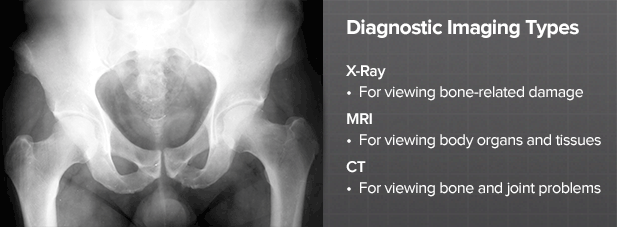
The diagnosis of hip disorders usually starts with your complete history and a physical examination by a medical doctor to understand your general health, extent of your hip pain and its impact on your daily activities. The physical checkup typically includes examination of standing posture, seated and lying position, and gait analysis (assessment of how a person walks)—helping to confirm or rule out potential diagnoses. This first physical exam also enables the doctor to evaluate the hip’s mobility, strength, alignment and range of motion.
Usually, your hip disorder or injury diagnosis is based on an X-Ray to determine the location and severity of bone and cartilage damage. Your doctor may also order one or more specialized tests, depending on the known or suspected causes of pain. Lab results, ultrasound or even CT or MR imaging may also contribute to your diagnosis and a resulting individual treatment plan.